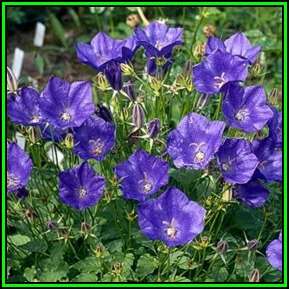
Campanula carpatica - Carpathian Bellflower Seeds - Exotic Perennial - Groundcover - New
Check my rate
| Main centres: | 1-3 business days |
| Regional areas: | 3-4 business days |
| Remote areas: | 3-5 business days |

| Main centres: | 1-3 business days |
| Regional areas: | 3-4 business days |
| Remote areas: | 3-5 business days |
Campanula is one of several genera in the family Campanulaceae with the common name bellflower. It takes both its common and its scientific name from its bell-shaped flowers—campanula is Latin for "little bell". The genus includes over 500 species and several subspecies, distributed across the temperate and subtropical regions of the Northern Hemisphere, with the highest diversity in the Mediterranean region east to the Caucasus. The range also extends into mountains in tropical regions of Asia and Africa.
Campanula carpatica or Carpathian Bellflower as it is commonly known is native to the Carpathian Mountains. The leaves are small, tough, pointed, with saw-tooth edges, having the shape of feathers, hence the secondary common name Tussock, which means feathery or tufted. The plant is excellent as a groundcover in the mixed perennial border. It is a floriferous groundcover growing 15-30cm tall with a compact habit. It grows well in full sun to light shade and has from white to violet bowl-shaped flowers and grows into a mat. The plant is densely covered by the compact mounds of white, blue, or violet flowers. Its flowers last a very long while, in continuous bloom. Trimming out spent blooms maximizes its beauty and assists continuous re-bloom. This very long blooming plant looks great in a rockery or used in the front of the border. The plant attracts birds, most notably hummingbirds.
|